Ghrelin octanoylation mediated by an orphan lipid transferase
- PMID: 18443287
- PMCID: PMC2359796
- DOI: 10.1073/pnas.0800708105
Ghrelin octanoylation mediated by an orphan lipid transferase
Abstract
The peptide hormone ghrelin is the only known protein modified with an O-linked octanoyl side group, which occurs on its third serine residue. This modification is crucial for ghrelin's physiological effects including regulation of feeding, adiposity, and insulin secretion. Despite the crucial role for octanoylation in the physiology of ghrelin, the lipid transferase that mediates this novel modification has remained unknown. Here we report the identification and characterization of human GOAT, the ghrelin O-acyl transferase. GOAT is a conserved orphan membrane-bound O-acyl transferase (MBOAT) that specifically octanoylates serine-3 of the ghrelin peptide. Transcripts for both GOAT and ghrelin occur predominantly in stomach and pancreas. GOAT is conserved across vertebrates, and genetic disruption of the GOAT gene in mice leads to complete absence of acylated ghrelin in circulation. The occurrence of ghrelin and GOAT in stomach and pancreas tissues demonstrates the relevance of GOAT in the acylation of ghrelin and further implicates acylated ghrelin in pancreatic function.
Conflict of interest statement
The authors declare no conflict of interest.
Figures
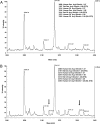
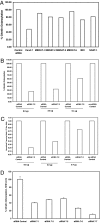
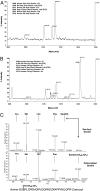
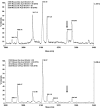
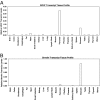
Comment in
-
Gastric O-acyl transferase activates hunger signal to the brain.Proc Natl Acad Sci U S A. 2008 Apr 29;105(17):6213-4. doi: 10.1073/pnas.0802461105. Epub 2008 Apr 28. Proc Natl Acad Sci U S A. 2008. PMID: 18443299 Free PMC article. No abstract available.
References
-
- Kojima M, et al. Ghrelin is a growth-hormone releasing acylated peptide from stomach. Nature. 1999;402:656–660. - PubMed
-
- Kojima M, Kangawa K. Ghrelin: Structure and function. Physiol Rev. 2005;85:495–522. - PubMed
-
- Tschop M, Smiley DL, Heiman ML. Ghrelin induces adiposity in rodents. Nature. 2000;407:908–913. - PubMed
-
- Van Der Lely AJ, Tschop M, Heiman ML, Ghigo E. Biological, physiological, pathophysiological, and pharmacological aspects of ghrelin. Endocr Rev. 2004;25:426–457. - PubMed
MeSH terms
Substances
Associated data
- Actions
- Actions
- Actions
- Actions
LinkOut - more resources
Full Text Sources
Other Literature Sources
Molecular Biology Databases

